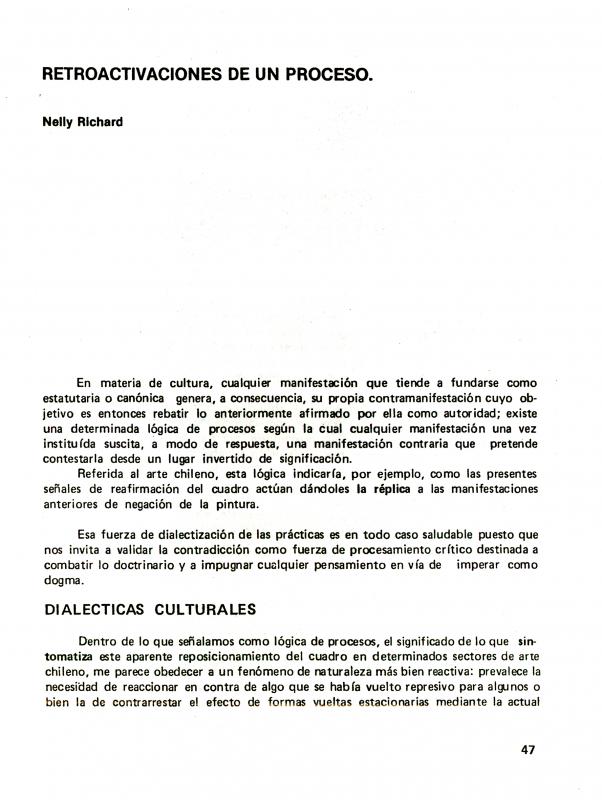The art historian Milan Ivelic (b. 1935) wrote this essay for the catalogue for an exhibition of works by the group known as Promoción 80 [Class of ’80] at the BHC salon in Santiago. This was the group’s third exhibition, following their earlier ones at CEDLA (Centro de Enseñanza de la Arquitectura) in 1979, while they were still students at the Facultad de Artes de la Universidad de Chile, and, the following year at the Museo de Arte Contemporáneo, which is part of the university. Those participating in the BHC event were Victoria Calleja (b. 1958), Omar Gatica (b. 1956), Jorge Tacla (b. 1958), Mami Usui (b. 1957), Ismael Frigerio (b. 1955), Samy Benmayor (b. 1956), Álvaro Cortés (b. 1954), and Matías Pinto D’Aguilar (b. 1956), all of whom were 26 years old at the time of the exhibition. It should be noted that there are other painters who were part of the same class but did not take part in this exhibition.
This group appeared in Chile (during the dictatorship) at a time when conceptual art—represented mainly by the Escena de Avanzada—was the dominant style in non-institutional art. As in Europe in the years between the world wars when the “retour à l’ordre” called for a return to traditional art in rejection of the avant-garde, the emergence of this kind of artist in Chile was called a “return to painting” because it was, according to the Promoción ’80 group, a way to counter the experimental nature of contemporary art that included extraneous materials in art, thus challenging the painting tradition. A landmark event during this conflict of ideas was BENMAYOR/DIAZ/DITTBORN/ DUCLOS/LEPPE (1983), the exhibition organized by Carlos Leppe (1952–2015) and Gonzalo Díaz (b. 1947), who was one of the teachers of the Class of ’80. The theorist and cultural critic Nelly Richard contributed to the exhibition catalogue with the essay “Retroactivaciones de un proceso” (doc. no. 730159). Her main criticism of this return to painting concerned the de-politicizing of art; it was, in her opinion, a self-absorbed kind of painting that was rooted in the artist’s subjectivity, which was out of touch with the stifling, complex conditions the country endured throughout the dictatorship of General Pinochet (1973–90). Richard discussed this matter in detail in the chapter “Return to the pleasurable” (doc. no. 743686) of her book Margins and Institutions. Art in Chile Since 1973, published in 1986. Richard insisted that she was not criticizing painting itself, but the way in which it was approached. She also discusses the painting of Gonzalo Díaz, Eugenio Dittborn (b. 1943), Juan Domingo Dávila (b. 1946), and Carlos Altamirano (b. 1954).


